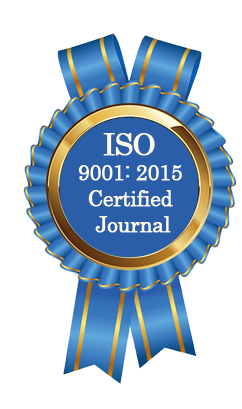| All | Since 2020 | |
| Citation | 105 | 60 |
| h-index | 4 | 4 |
| i10-index | 3 | 2 |
WJAHR Citation 
Login
News & Updation
Best Article Awards
World Journal of Advance Healthcare Research (WJAHR) is giving Best Article Award in every Issue for Best Article and Issue Certificate of Appreciation to the Authors to promote research activity of scholar.
Best Article of current issue
Download Article : Click here
Indexing
Abstract
THE EFFECT OF NARROWBAND ULTRAVIOLET B PHOTOTHERAPY ON LEVELS OF SERUM VITAMIN D3 IN PSORIATIC PATIENTS
Natalie Jarkas*, Fouz Hassan and Faisal Radwan
ABSTRACT
Background: Ultraviolet (UV) radiation is a well-established and effective treatment option in mild to moderate psoriasis. These clinical developments have encouraged conducting more studies on the mechanisms by which phototherapy work. The skill gained from this work is an indispensable prerequisite to make treatment decisions based on a rational rather than empirical decision. Aim: It is also known that radiation of wavelength between 295 and 315 nm is responsible for cutaneous vitamin D3 production.so that The goal of the present study is to investigate the effect of narrowband UVB (NB-UVB) phototherapy on serum 25-hydroxyvitamin D (25[OH]D) levels and related parameters in patients with psoriasis. Methods: A prospective study invol of a total of 25 participants with psoriasis requiring phototherapy thrice weekly for 6 weeks were enrolled in this study. Serum vitamin D levels were measured at baseline and at approximately 6 weeks into phototherapy. PASI was evaluated at baseline among patients and do it again after receiving 6 weeks of NBUVB therapy. Database were adjusted for, patients’, sex, age, clinical type of psoriasis, the duration of psoriasis and Fitzpatrick skin phototype. Results A total of 25 patients presenting with psoriasis, the mean values of serum vitamin D3 level before treatment were 14.93 ±1.9 and increased after treatment by 26.5%. The mean values of the serum level of vitamin D3 after phototherapy were 18.89±4.8 (number of sessions = 18) with statistically significant differences before and after treatment although the values remaining within the range of inadequacy. The mean values of PASI before treatment were 17.46±8.6 with a decrease in the mean values after treatment and became 11.69±5.2 there was a significant improvement in PASI as well as 25(OH)D (P < 0.05) without a significant. Conclusions: Improvement in PASI and serum 25(OH)D levels after NBUVB in psoriasis is significant but weak and inconsistent relations with each other. Vitamin D may not be the distinct mediator of the therapeutic effects of NBUVB on psoriasis.
[Full Text Article] [Download Certificate]
